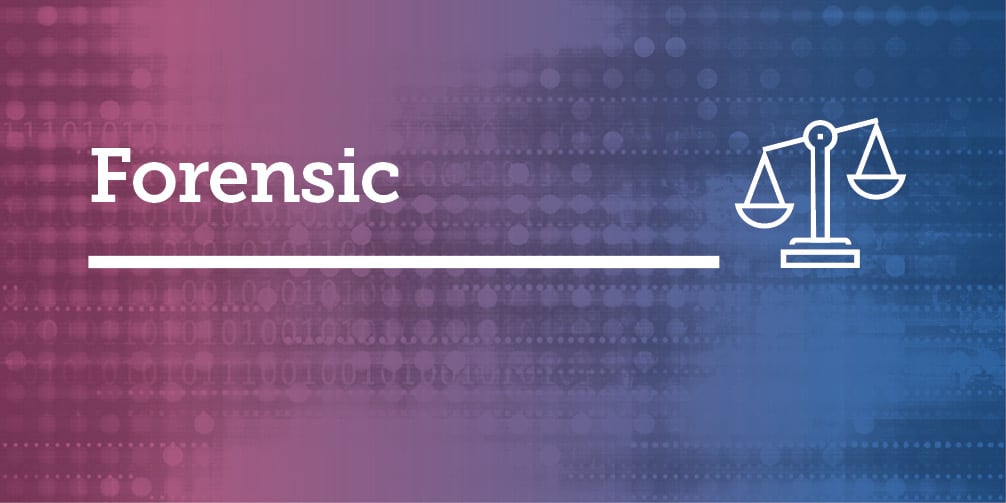Featured Article
Article Title
Jail-Based Competency Restoration Services in the United States
Authors
Douglas E. Lewis Jr.; Georgia Diagnostic and Classification Prison; Emory University School of Medicine
Peter Ash; Emory University School of Medicine
Victoria C. Roberts; Emory University School of Medicine
Tomina J. Schwenke; Emory University School of Medicine
Melvin Pagán-González; Emory University School of Medicine
Glenn J. Egan; Emory University School of Medicine
Abstract
Jail-based competency restoration largely emerged as a method to address the backlog at forensic hospitals around the United States, as the number of justice-involved persons in need of restoration outgrew available beds. Jail-based competency restoration units (JBCRUs) appear to be highly effective and cost-saving. However, after the COVID-19 outbreak, services at some JBCRUs were stalled, as providers were forced to either quickly initiate or ramp up technology use to maintain services. The present study describes the course of programming for a JBCRU in Fulton County, georgia, prior to and after the onset of COVID-19, during which time all treatment shifted to telehealth. A matched comparison group of prepandemic defendants was used to compare in-person versus telehealth services and findings indicated that while defendants’ length of stay remained effectively the same, the restoration rate for telehealth increased remarkably over prepandemic levels (χ2 = 10.1, p = .001). Such findings suggest that telehealth services are an effective mode of delivery for competency restoration.
Keywords
Jail-based competency restoration services; jail-based competency restoration unit; competency to stand trial; telepsychology; criminal justice system; telehealth platform
Summary of Research
"The Supreme Court ruling in Dusky v. United States (1960) transformed the landscape of the American criminal justice system, as it required courts to ensure that justice-involved persons are competent to stand trial (CST) prior to engaging in legal proceedings." Over time, "the number of evaluations each year has likely tripled since the 1960s," largely attributed to "deinstitutionalization… [which] ushered in community placement without adequate treatment options for numerous individuals with severe mental illness." Consequently, "the most common diagnosis seen among individuals deemed incompetent to stand trial (IST) was psychosis followed by cognitive and affective disorders." Given the lack of adequate psychiatric treatment, "many of those individuals, prior to deinstitutionalization, may have been placed in a long-term psychiatric facility for treatment rather than have been subjected to incarceration." However, "institutionalization certainly had its drawbacks," creating an ongoing challenge in balancing care and legal proceedings for IST defendants (p. 217).
As the number of individuals deemed incompetent to stand trial (IST) increased, alternatives to traditional inpatient hospitalization became necessary. "Jail-based competency restoration services emerged as a novel solution to problems resulting from extended waits for hospital beds and those stemming from the rising costs of inpatient hospitalization." These services are delivered in two primary ways: "One method of jail-based service delivery comprises individual restoration efforts conducted in the general population, wherein IST defendants are provided legal education and psychiatric treatment. Another method has focused on service delivery for IST defendants while they are housed on a segregated unit." The first JBCRU "was established in the state of Virginia in 1997," and since then, "jail-based services in which IST defendants are housed separately from the general population have been offered in at least 13 states." Given the increasing reliance on JBCRUs, this study seeks to "describe a model for the delivery of jail-based competency restoration services; describe the shift from an in-person to telehealth model for the delivery of jail-based competency restoration services in the wake of COVID-19; and compare previous competency restoration rates with preliminary rates since the implementation of telehealth services” (p. 218 - 220).
"Our study utilized a between-participants design examining two independent groups (prepandemic/pandemic) with regard to differences on several outcomes." The study examined "differences in final disposition, length of time to restoration of competency, and length of stay." Data collection included "demographic data; type of crime; legal status; previous and current forensic opinions; type of impairment; treatment type and duration, including medications and medication refusal; and disposition." The pandemic sample "consisted of 42 male defendants" and was compared to "a matched comparison group drawn from the list of prepandemic defendants (n = 398)" (p. 224 - 225).
"Mental health clinicians generally advocate for the least restrictive treatment environment, regardless of the particular set of challenges with which the individual presents." The study found that "despite the apparent criticisms of JBCRUs, a robust cost-benefit analysis for JBCRUs... may prove beneficial when considering the wide variation of deficits observed among IST defendants." The onset of COVID-19 presented "new challenges, however, as protocols within the jail environment as well as procedures within the court system shifted" (p. 227-228).
Findings indicated that "the CRU’s restoration rate was higher during the implementation of telehealth services when compared with prepandemic programming." Possible explanations include "smaller group sizes, increased time in individual treatment sessions, fewer distractions in individual and smaller groups in the day (common) area, and increased focus during sessions using the Zoom format." However, the study acknowledged that "the responsibilities of the CRU officers increased remarkably and required hours-long training and coordination" (p. 228).
Moreover, the study found that "the length of stay for IST defendants was 26 days longer once we began solely offering telehealth services." While "these periods may have been extended as a result of COVID-19 protocols," the study suggested that "the physical presence of clinicians on the CRU" could also impact the time required for restoration (p. 228).
Translating Research into Practice
“...Once COVID-19 restrictions were imposed, however, postdoctoral residents were given additional responsibilities, as they were instrumental in the CRU’s launch of telehealth services. They were required to learn the technological resources available and determine which staff members were best suited to complete specific tasks. For example, the psychiatry fellows were tasked with gaining remote access to jail medical records, while the postdoctoral residents trained correctional officers to set up the telehealth platform for groups and individual sessions. The latter task required great coordination across an interdisciplinary team with varying levels of knowledge and expertise and could not have been achieved without persistent communication with correctional administrators.
As restrictions continued from the end of one training year through several months of the following year, the orientation of incoming psychiatry fellows and postdoctoral residents required significant acclimation to the use of technology through review of literature and observation. Early signs indicate that the use of telehealth platforms may become widespread practice and it is vital that curriculum and training are further developed to address this growing paradigm.
We found that the crystallized structure of supervision afforded through the use of technology was invaluable to forensic supervisors and trainees alike and decided to continue with remote sessions in addition to in-person feedback and supervision. This allowed for more formalized, standing supervision hours, which are often difficult to maintain in the correctional setting” (p. 231).
Other Interesting Tidbits for Researchers and Clinicians
“Telehealth services, as implemented within our program, are likely not appropriate for IST defendants with chronic and treatment-resistant psychotic disorders; rather, restoration success is more likely when IST defendants have the capacity to maintain themselves in front of a screen for distinct periods of time. Telehealth services cannot be delivered to IST defendants with psychotic disorders who are not medication adherent and are too paranoid or distressed to exit their cell. This mode of service delivery may also be contraindicated for IST defendants with communication disorders or who are vision and/or hearing-impaired.
Still, it became apparent to us that, rather than being just a temporary method used to overcome challenges brought on by the pandemic, the convenience and cost-saving potential associated with telehealth services will likely be an enduring feature of forensic work in the 21st century. Mulay et al. (2021) corroborate this perspective, as they noted the use of VC for forensic evaluations may be useful in jurisdictions with limited resources and lessen delays in resolving legal cases.
It remains unclear, nonetheless, whether the establishment of a “human connection” between a forensic evaluator or treatment provider and the defendant is better facilitated through in-person services. Does the apparent absence or reduction of such connection affect evaluations as well as treatment outcomes? In a recent meta-analysis, researchers suggested that telepsychology outcomes were greatly similar to in-person outcomes when working with justice-involved individuals (Batastini et al., 2016, 2020). we argue that evaluation and treatment outcomes are likely deficit-dependent, as it seems that certain defendants are more appropriate for telehealth services than others. Future research must be conducted to develop “best practices” or guidelines for screening defendants who might benefit from the use of telehealth platforms” (229 - 230).





























